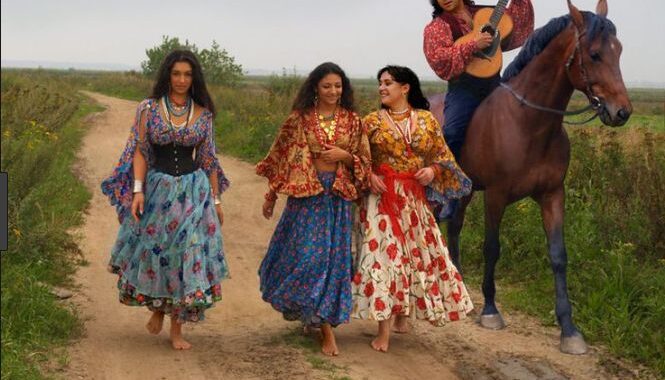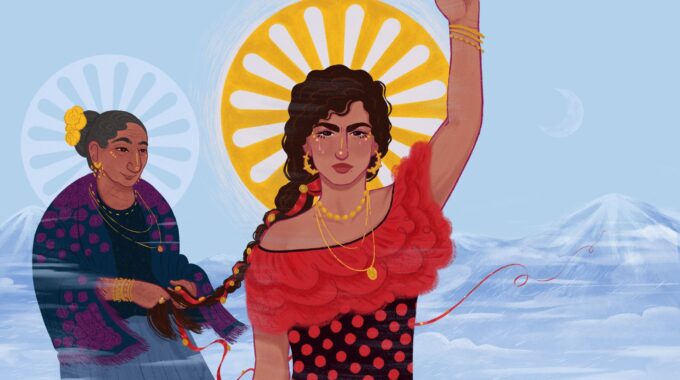
National support for the Roma community in Slovakia
Roma communities play a significant role in Slovak society, but they often face challenges and obstacles. However, there are several projects and initiatives focused on creating an inclusive society where Roma have an equal place alongside the majority population. These efforts span various areas, from education to healthcare and inclusion. In this article, we’ll explore some of these initiatives and projects that have a positive impact on Roma communities in Slovakia. We’ll discuss their goals, successes, and the challenges they face. The examples provided will help us understand the importance of both national and nonprofit sectors and community-based organizations in caring for our society.
In the early 1990s, Roma cultural associations, folklore ensembles, and periodicals began to emerge. The Professional Romathan Theater in Košice, the only one of its kind in Slovakia, is one of the first results of these activities. Other organizations addressing the Roma minority in Slovakia include the Slovak National Museum – Museum of Roma Culture in Martin, the Documentation and Information Center of Roma Culture at the State Scientific Library in Prešov, and the Gemer-Malohont Museum in Rimavská Sobota. Non-governmental organizations (NGOs) also operate in Slovakia, such as the Center for Social Assistance to Youth (CESPOM), In Minorita, the Cultural and Educational Civic Association Lačho drom, the Cultural Association of Roma in Slovakia, OZ Nová cesta, and Quo Vadis – a civic association, among many others.
National Initiatives
Roma initiatives and projects in Slovakia play a crucial role in improving the lives of Roma communities. Their efforts focus on inclusion, education, healthcare, and economic independence. Roma Commissioner Ján Hero stated that several projects were implemented during the seven-year program period by the Office of the Government Plenipotentiary for Roma Communities.
The Office actively works on solving problems and supporting Roma communities. Over the past seven years, several national projects were implemented in nearly 150 municipalities with marginalized Roma communities. These projects included field social work, inclusion projects in kindergartens, land settlement support, and community services.
The projects were identified based on selection criteria and internal analysis by the Atlas of Roma Communities (ARK). Authorized users include 60 municipalities from the Atlas. These municipalities achieved the highest scores and provided written consent to participate in the National Program for Roma Communities. The methodology favored a balanced ratio of Roma and non-Roma populations in smaller municipalities within ongoing regions. These projects were actively carried out in three regions: Prešov, Košice, and Banská Bystrica. More than half of them were located in the Prešov region, followed by Košice and Banská Bystrica. Social services were provided to 101,000 people, including over 5,000 children.
Within the field social work project in municipalities, nearly 7,000 employees were employed, and more than 3,000 clients were debt-free. In the area of community services, almost 9,000 interventions were provided through career counseling, employing over 1,500 people. Individual employment services also led to the employment of nearly 3,400 Roma.
One noteworthy national project is the “Inclusion” project in kindergartens, which provided parental assistants previously unsupported. Thanks to this project, more than 11,000 children completed at least one year of preschool preparation.
The National Project for Supporting Land Ownership Settlement focuses on resolving land ownership issues related to Roma dwellings in municipalities with marginalized Roma communities. This marks the first time in Slovakia’s history that such matters have been addressed specifically for Roma dwellings. Partial progress has been made in settling and transferring land ownership in 19 municipalities to the Roma population. The project’s activities are funded through the National Program for Supporting Legal Relations to Land in municipalities with marginalized Roma communities.
Additionally, a new Atlas of Roma Communities has been created, covering 825 municipalities in Slovakia. Developed by the Office of the Government Plenipotentiary for Roma Communities, this atlas serves as a crucial tool for mapping structural inequalities between Roma and the majority population. It provides information about municipalities with Roma settlements and their living conditions, enabling corrective actions through public policies. While the Atlas focuses on living conditions and service availability, it does not encompass all the disadvantages faced by Roma. Nevertheless, it remains a valuable source of information. The first Atlas was published in 2004, followed by subsequent editions in 2013 and 2019.
As an illustrative example of the positive impact of national initiatives, let’s consider the village of Jarovce (Sabinov). In this village, with a population of nearly 8,000 residents (including 500 Roma), these initiatives have significantly increased employment within the Roma community. Approximately seven years ago, only around 50 people were employed, mainly as cleaners or field workers in schools. Currently, there are approximately 700 to 1,000 employed individuals.
These national projects received support during the 2014–2020 program period from the Human Resources Operational Program.
Another noteworthy initiative is the “Better Future for Young Roma” project, conducted under the auspices of the organization Človek v ohrození (People in Need). In addition to national efforts, numerous nonprofit organizations actively support the Roma community. Their work spans various areas, including education, social integration, culture, and healthcare. These organizations often collaborate with local authorities, schools, and other institutions to improve Roma living conditions.
In western Slovakia, the “Better Future for Young Roma” project aims to provide Roma children with opportunities to create a brighter future. Currently developing in areas such as Lozorno, Plavecký Štvrtok, and Zlaté Klasy, the project is led by Človek v ohrození, an organization operating since 1999. Since 2004, they have worked closely with young people from marginalized Roma communities through five community centers and two vocational counseling centers. Their main goal is to motivate these young individuals to continue their education at secondary schools, gain their first work experience, and enter the world of vocational education and employment. The project supports dual vocational education, where theoretical education is provided by schools, and practical training takes place directly with employers. Students also receive scholarships, providing significant assistance to their families. Parents are actively involved and receive support.
This year, the project has collaborated with 94 children and their families, resulting in 46 of them securing employment opportunities during the project. Michaela Mudroňová, the coordinator of vocational counseling in marginalized Roma communities at Človek v ohrození, emphasized that one of the longstanding challenges faced by Roma residents is low levels of education and employment. Therefore, the “Better Future for Young Roma” project focuses on bridging schools and employers, with intensive collaboration with selected primary schools.
The project began in 2020 in collaboration with the Volkswagen Slovakia Foundation, which serves as an ambassador and investor for this initiative. Their integration program for employing Roma has expanded not only in Plavecký Štvrtok but also in other locations in the Záhorie region. This year marks the fourth year of their partnership.


Sources:
Na pomoc rómskej komunite pôjde v novom programovom období 907 mil. eur, tvrdí Ján Hero | Topky.sk
Ocenenie Roma Spirit štartuje svoj 16. ročník! – Roma Spirit
Medzi sedem projektov pre rómske komunity sa rozdelí viac ako milión eur – SME
Projekty, ktoré zlepšujú situáciu Rómov na Slovensku budú ocenené | Aktuality.sk
Desiatky miliónov eur majú pomôcť Rómom zamestnať sa, výzva má riešiť aj ďalšie problémy – SITA.sk
Centrum príležitostí na Horehroní pomôže nájsť prácu najzraniteľnejším (teraz.sk)



